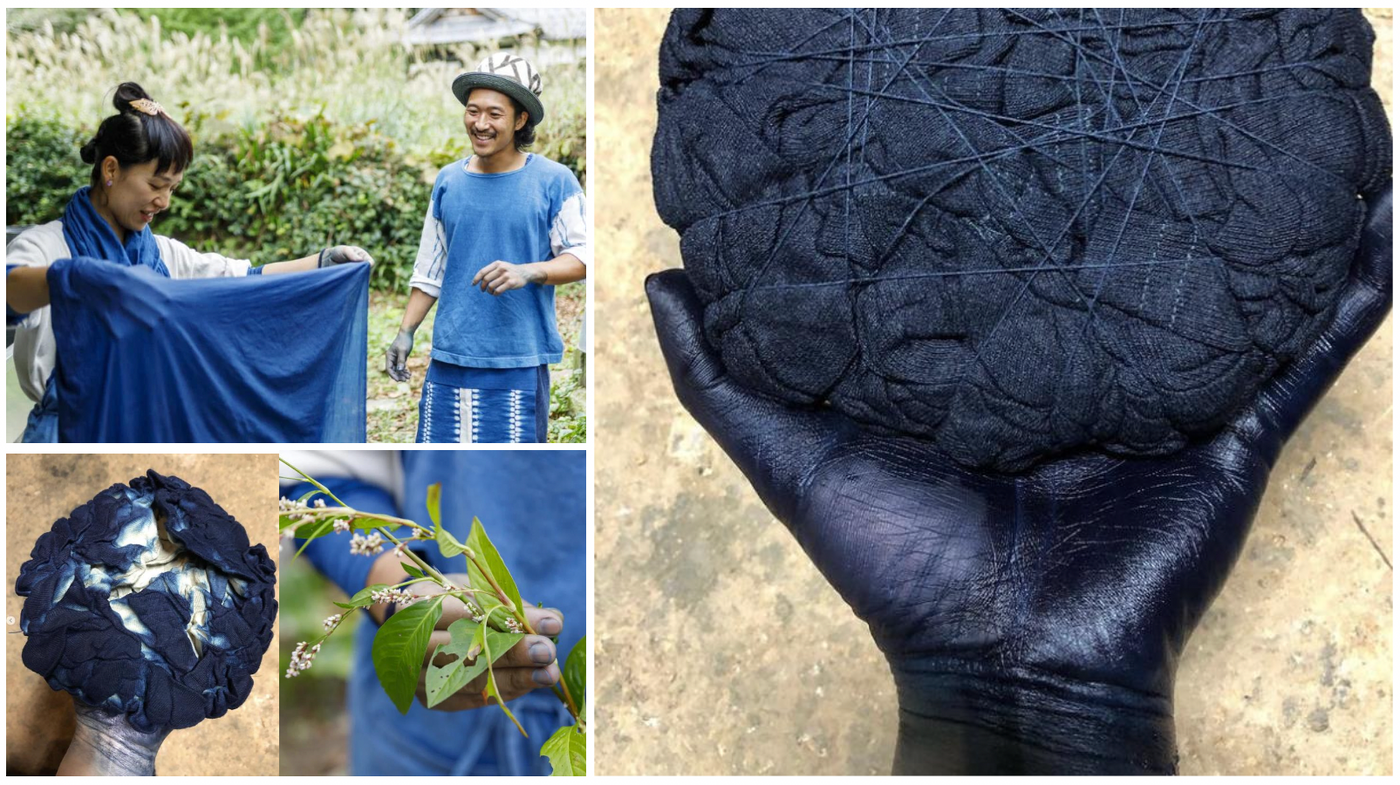Indigo is believed to be the oldest plant-based dye in human history, discovered and utilised by ancient civilizations around the world. Japan also has its own centuries-old history of aizome (indigo dyeing). Indigo was popularly worn by the samurais as it symbolised good luck, and in the Meiji period (1868-1912) the colour was internationally referred to as Japan Blue. In contemporary Japan the more convenient synthetic dye has become mainstream, but the natural vivid blue is still appreciated by artisans around the country who practice traditional dyeing methods to achieve those beautiful hues.
Meet aizome artist Naoko Omae, who found her love for Japanese indigo dyeing after studying fine arts in California. She currently lives in a traditional thatched-roof house in the mountainous Miyama town, where she makes indigo art with her spouse, Kota.

Even though indigo dyes can be made with fresh indigo leaves, it is less common due to its limited availability. Which is why the wise invented a technique that involves fermenting the dye ingredients using lye produced from wood ash. “The process requires a lot of time, effort and love, but once the indigo dye is made, the solution can be used multiple times. You can dip your fabric as many times as you want and experiment with light and dark hues or different levels of richness,” explains Naoko.
When Naoko dyes fabric, it’s like watching magic. First, she gently submerges the fabric inside the indigo vat and after ensuring that the fabric is evenly and entirely soaked in the dye, she carefully removes it from the vat and rinses it in a tub of water. What happens is that the dye oxidizes inside the water, changing colour into a breathtaking blue in seconds. The colour is so fresh and pure that watching the process is almost like a soul cleansing experience.
When dyeing garments, the two indigo dyers repeat the same process for at least seven times to build up colour. For art pieces, they sometimes dye them for more than 20 times. “The cumulative process allows the blue to become richer and more saturated. After the indigo dye is adhered to the fabric, there’s no worry for the colour to bleed or rub off. Every time this beautiful colour reveals itself in front of me—I’m in awe,” says Naoko, as she admires her freshly dyed piece.

The lifespan of the indigo vat prepared by the duo is anywhere from two to six months and during that timeframe, they can use it to dye fabric as many times as they want. However, since their indigo dye is an organic solution made of natural substances, they let it rest for a day after using it. According to the couple, the bacteria in the indigo vat can get tired too and overworking it hinders its power to produce beautiful colours. Their practice is not about efficiency or productivity, but rather about respecting the organic rhythm of natural indigo.
The Omaes are very particular about their ingredients, using only natural materials to appreciate naturally occurring colours. For instance, the indigo dyeing duo uses sukumo made by a well-experienced artisan, who devotes 100 days to ferment and compost indigo leaves. The key ingredient to make indigo dye is, in other words, a “hibernating” indigo concentrate.
The sukumo is then matured for an additional year before the Omaes prepare their indigo dye. Inside their ceramic vat they place their sukumo along with other ingredients that are the nutritional components necessary for fermentation such as wheat bran, Japanese rice wine and lye made with hardwood ash. The mixture is stirred every day to awaken the bacteria from its dormant state, solubilizing the pigment so that it dissolves into the solution.
Another essential ingredient to ferment the dye solution is natural lye made with hardwood ash. In the past, ash was easily a result of everyday life since people used firewood for cooking and heating water to take a bath, but in the contemporary lifestyle you can imagine the difficulty of obtaining 40 kilograms of ash every year. However, the Omaes produce their own ash by burning timber gathered from thinning the neighbouring mountains in the kitchen and living room areas. Their practice of indigo dyeing and the colours they create a reflection of their everyday life.

Naoko and Kota together launched a clothing brand called OW to show the world the beauty of aizome as well as its functional aspects. With a mission to reintroduce natural indigo-dyed products into our lifestyle, the Omaes’ artistry is also about appreciating the hidden powers of plants and connecting with the environment.










































